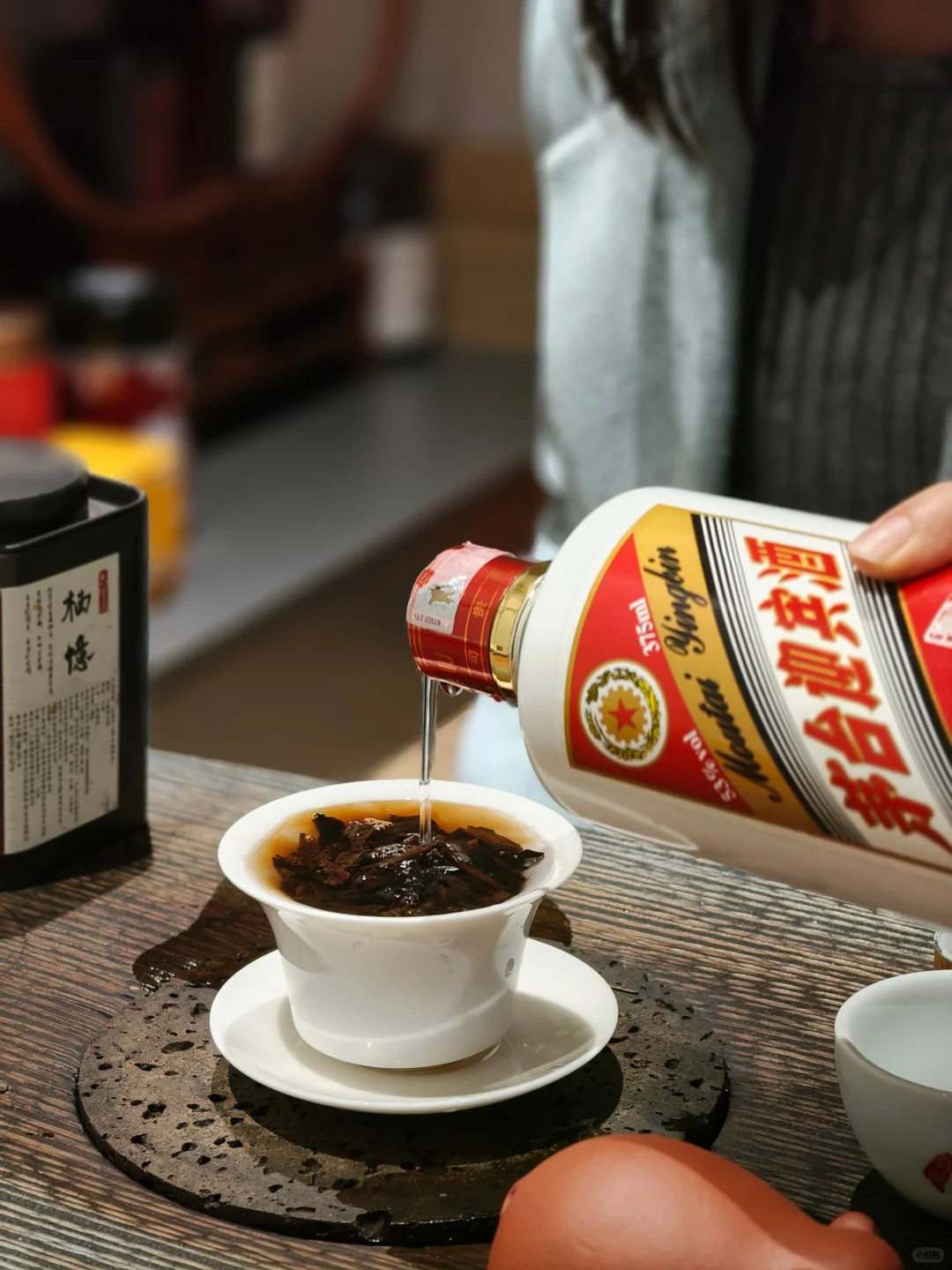Guizhou, located in southwestern China, is known for its stunning landscapes, rich natural resources, and unique ethnic cultures. The natural scenery here is captivating, from the world-famous Huangguoshu Waterfall to the magical karst formations, as well as vast forests and mountains. The deep caves, clear rivers, and winding streams create a unique natural landscape in Guizhou.
Guizhou is also an important birthplace of Chinese ethnic culture, where the cultures of the Miao, Dong, Buyei, and other ethnic groups meet and blend. This diversity has formed rich customs, festivals, and unique traditional crafts. Many villages in Guizhou still preserve authentic ethnic traditions, and visitors can not only enjoy the beautiful natural scenery but also experience the lifestyle, music, dance, and festivals of the local ethnic groups, gaining a deep understanding of the province's cultural heritage. The region has a long history and deep cultural roots, and both the traditional architecture and crafts reflect the cultural development and heritage of different eras.
I. The Marvelous Karst Landscape and Scenic Wonders
Guizhou’s karst landscape is famous for its unique and stunning mountain and water scenery, creating countless breathtaking sights. The mountains here are known for their steepness and irregular arrangement, with hundreds of stone peaks standing like natural sculptures. The karst formations have not only created majestic mountains but also birthed many mysterious caves, such as Zhi Jin Cave and Longgong Cave, where stalactites and stalagmites form incredible shapes, making you feel like you’ve entered a mysterious underground world.
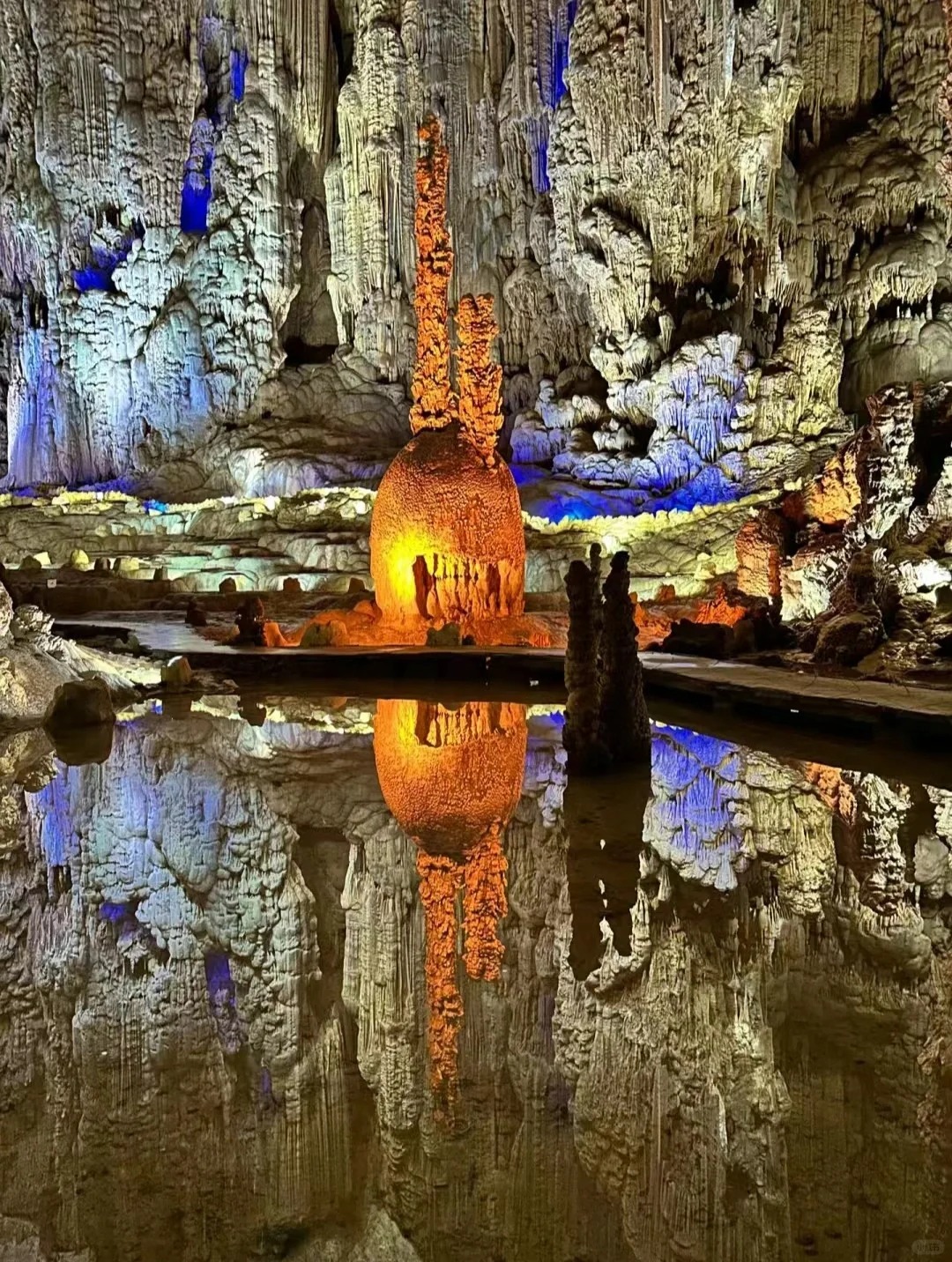
Among these wonders, the Huangguoshu Waterfall, known as the "world's number one waterfall," is particularly impressive. Its rushing water cascades down, creating a mist that fills the air, offering a striking visual experience. Tianzhu Mountain, with its rugged terrain and lush vegetation, has become a popular spot for adventure and photography. Guizhou’s mountain and water landscapes are not only natural marvels but also deeply intertwined with the daily life and cultural memories of the people, showcasing the incredible power and beauty of nature.

II. Guizhou's Ethnic Minority Customs and Cultural Experience
Guizhou is a treasure trove of China’s ethnic cultures, home to many minority groups such as the Miao, Dong, and Bouyei, who have passed down their unique customs and traditions over generations. Visiting their hometowns feels like stepping back in time, where you can feel the deep historical and cultural roots of the area.
In Miao villages, visitors can witness traditional craftsmanship such as silver jewelry and embroidery, reflecting the intricate beauty passed down from nature and ancestral wisdom. During festivals like the Miao New Year or the Torch Festival, the whole village is filled with celebration. These festivals feature grand dances, powerful songs, colorful costumes, and passionate torch dances, showcasing the unique spirit of the Miao people.
Dong's Drum Towers and Wind and Rain Bridges are also symbols of Guizhou's culture. Here, visitors can enjoy the Dong people’s choral singing and the long-standing musical traditions passed down orally. The Bouyei people’s traditional festivals and weaving skills also add to the charm, making you feel as if you're in a colorful, harmonious world.
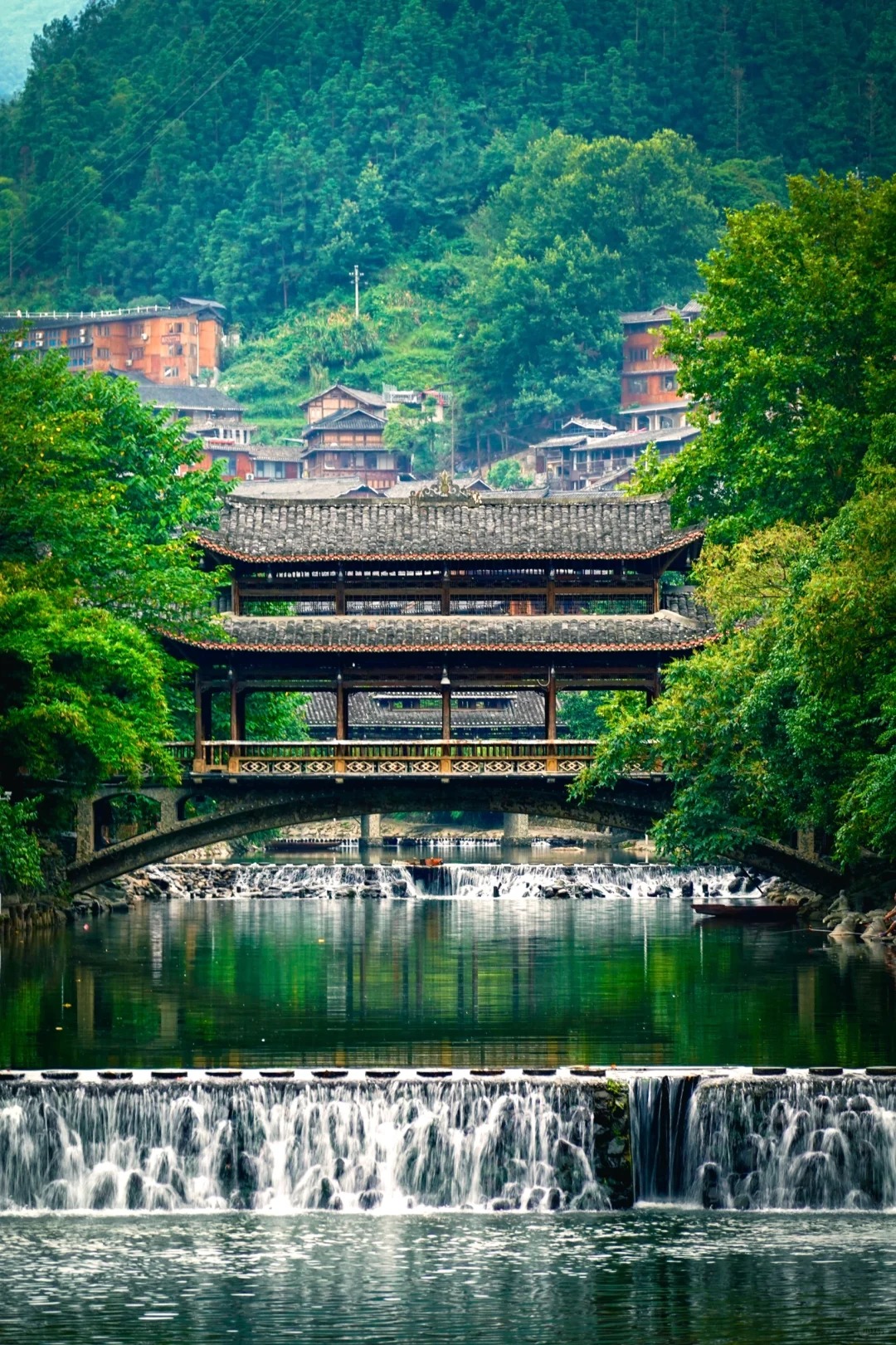
In Guizhou, the ethnic festivals and handicrafts are not just cultural displays, but also expressions of local people’s reverence for nature and life. They reflect the deep emotional connection between people, land, and culture.
III. Guizhou Culinary Exploration Tour
Guizhou's cuisine is known for its distinctive spiciness, sourness, and rich local flavors, making it a true adventure for your taste buds. Each dish gives you a taste of the region’s unique customs and the strong cultural atmosphere of the land.
One of the most representative dishes is sour soup fish, a traditional delicacy from Guizhou. It’s made with a spicy and sour broth, paired with fresh fish, delivering a rich and appetizing flavor. The broth, usually prepared with tomatoes, pickled vegetables, and various spices, is savory and vibrant, making your taste buds tingle. It’s often enjoyed with rice, which perfectly complements the bold flavors and leaves you craving more.
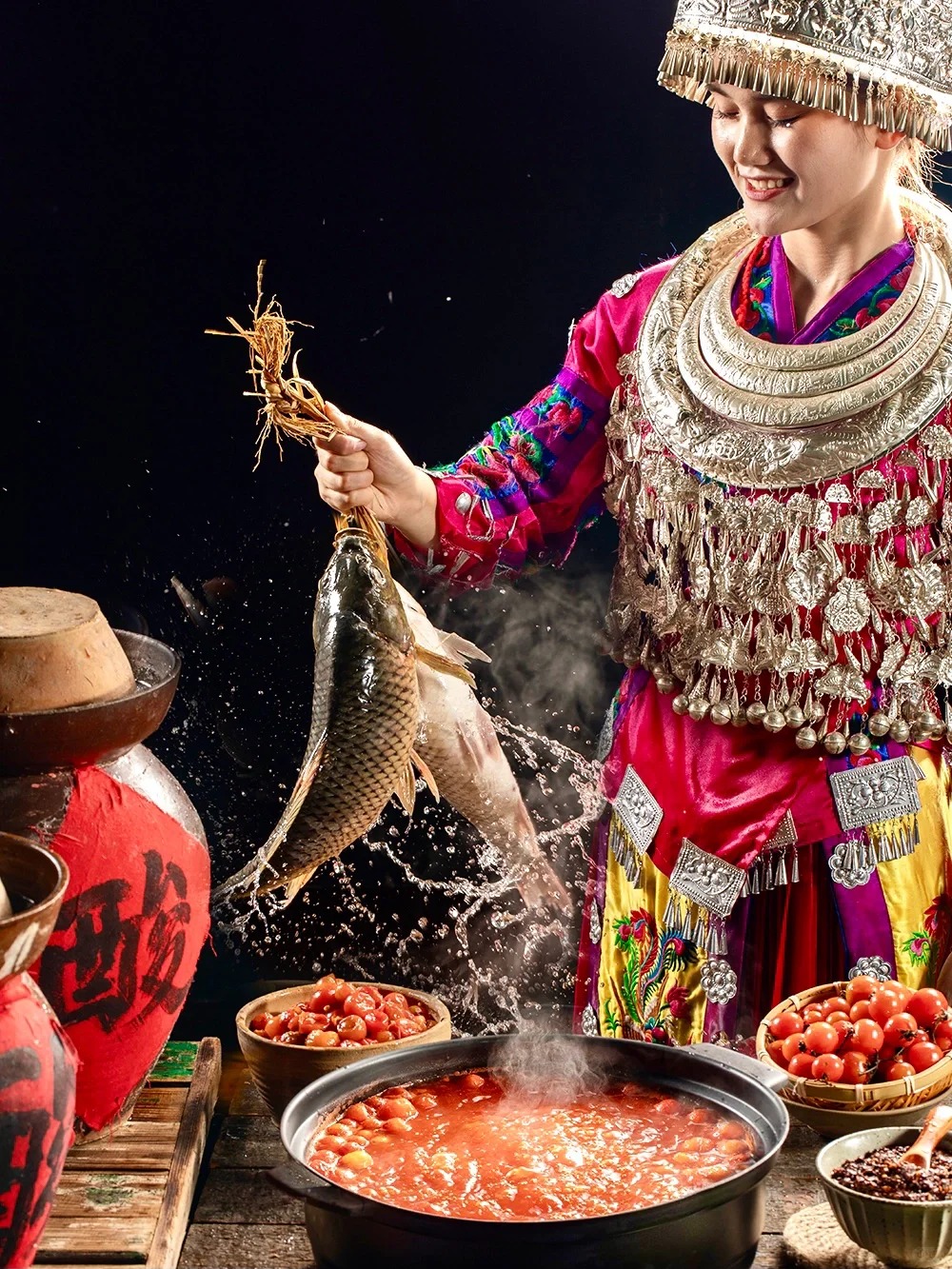
Another popular street food is Cháng Wàng Miàn (intestine and blood noodle soup), which features a spicy, tangy taste with a special combination of pig intestines and blood sausage. The noodles are packed with rich aromas and deep flavors, typically topped with spicy condiments, crushed peanuts, and green onions. It’s the kind of dish you can’t stop eating once you start.
Guizhou’s love for spice isn’t limited to food; even its drinks carry strong local flavors. Moutai is the most famous local liquor and has been brewed for centuries. With its rich, smooth taste and lingering aftertaste, Moutai represents the essence of Guizhou’s liquor culture. Its unique aroma is delicate and complex, setting it apart from other Chinese liquors.
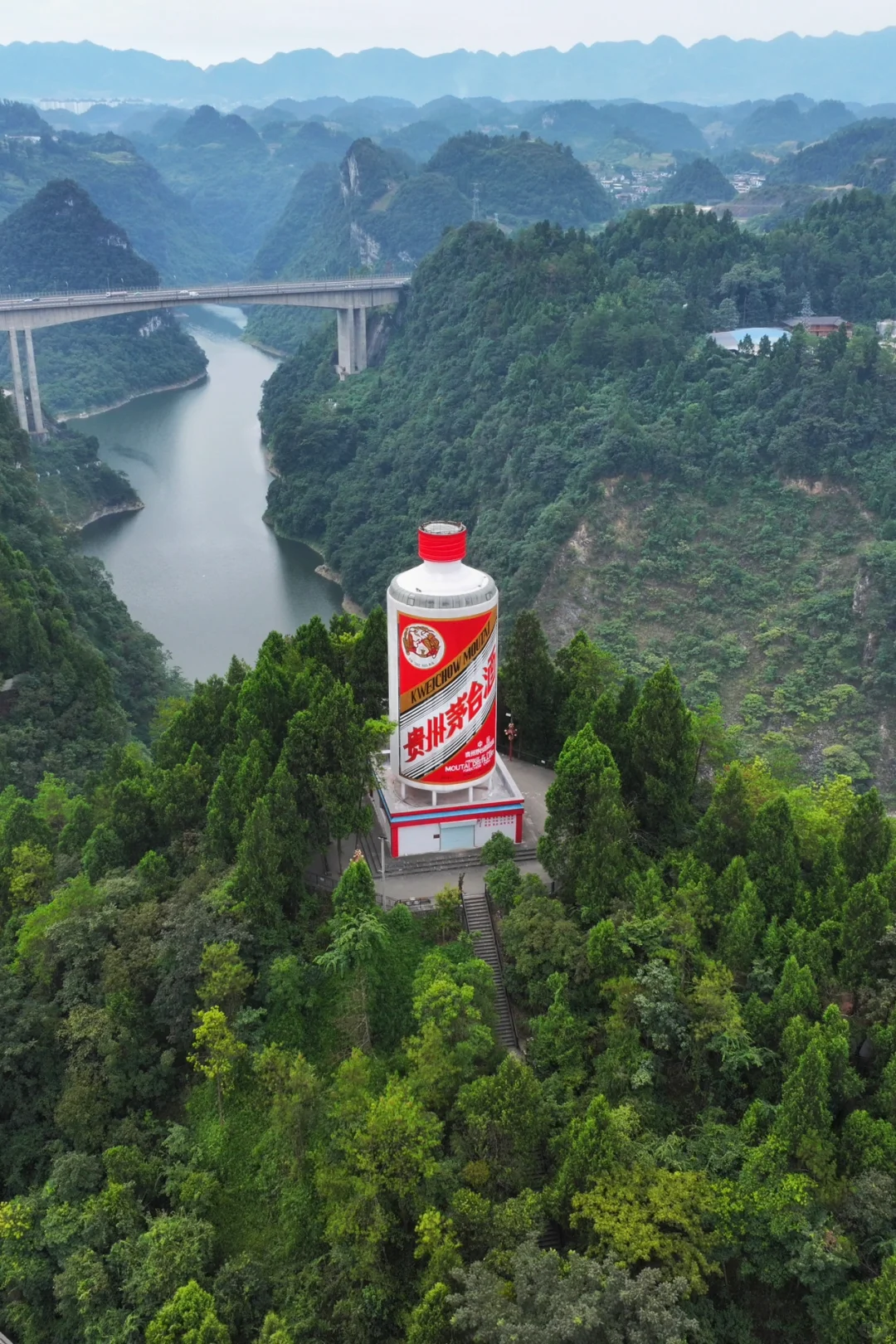
Moreover, alcohol culture is deeply tied to Guizhou’s dining traditions. At many local feasts, a good bottle of wine is a must, and the “cheers” culture helps bring people together. Whether it's the bold, spicy snacks or the fine brewing craft, Guizhou’s food and drink culture is filled with passion and enthusiasm, letting you experience the region’s fiery spirit with every bite and sip.
IV. Guizhou's Tea Culture
Guizhou is famous not only for Moutai liquor but also for an interesting legend about combining Moutai with tea. Moutai Town, the birthplace of Moutai, was once a key stop in the ancient tea-horse trade. Here, tea farmers shared their brewing skills with merchants and introduced a unique drink—Moutai Tea.
Moutai Tea is made by blending Moutai liquor with tea leaves, creating a rich, aromatic drink with a lasting aftertaste. It combines the fresh taste of tea with the strong aroma of Moutai, making it a perfect mix of tea and alcohol. Though not widely known, its uniqueness remains a local highlight.
This story reflects Guizhou's distinctive tea culture and rich history. Today, visitors in Guiyang and Moutai Town can still experience this unique local drink and feel the essence of the region.
V. Guizhou’s Seasonal Scenery and Best Time to Visit
Spring: Spring in Guizhou is warm and full of flowers like rapeseed, peach, and cherry blossoms. Great spots include Zunyi’s Honghuagang, Huangguoshu Waterfall, and Huaxi.
Summer: Summer is cool and perfect for escaping the heat. Visit Tianzhu Mountain and Fanjing Mountain for fresh air and natural beauty, or explore caves and waterfalls.
Autumn: Autumn is mild and great for leaf-viewing. Huangguoshu Waterfall is at its fullest, and the surrounding mountains are colorful—perfect for hiking and photography.
Winter: Winter is chilly but milder than northern China. Experience snow-covered landscapes and local festivals in Miao and Buyei villages.
Best Time to Visit: Spring and autumn are ideal for pleasant weather and beautiful views. Spring has flowers, and autumn has colorful leaves and harvest vibes.
Recommended Attractions: Popular spots include Huangguoshu Waterfall, Fanjing Mountain, and Xijiang Qianhu Miao Village. Visit Huangguoshu in autumn, Fanjing Mountain in summer, and enjoy winter festivals in Miao villages.


